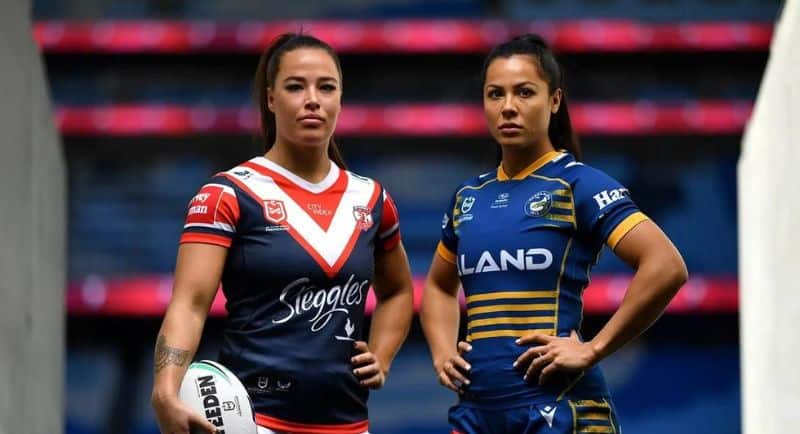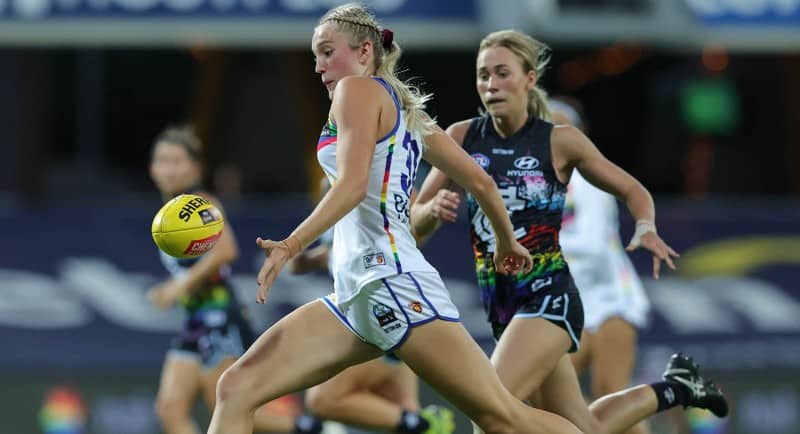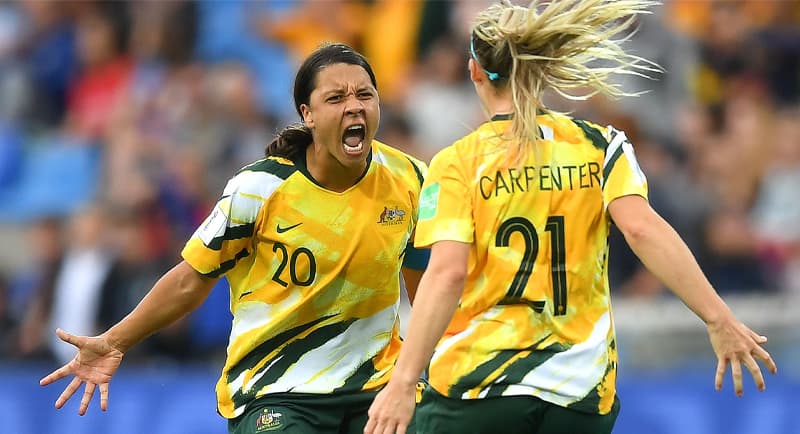On Tuesday, July 18th, the QT Gold Coast opened its doors to the fifth Ministry of Sport Women In Sport Summit. The conference brought together people from every corner of the sporting world to celebrate and elevate women’s sport, all focussing on this year’s theme: Face your Identity.
One of the major focuses of the conference was the rise in viewership for women’s sport – something the country has definitely proven in the weeks since, with millions tuning in to cheer on the Matildas.
Between Women In Sport Summit sessions, Mediaweek caught up with Clare Stewart-Hunter (head of client and creative services at Gemba), and Toby Dewar (director of customer engagement at Foxtel Media).

Clare Stewart-Hunter and Toby Dewar
Presenting the full results of their research into the rise of women’s sports viewership at their Women In Sport Summit panel, Stewart-Hunter gave Mediaweek a run-through of the biggest takeaways that the team discovered.
Stewart-Hunter: “Foxtel Media commissioned Gemba to run some research 12 months ago, looking at women’s sports viewership and consumption habits. We’ve run that research again in April and May this year, and seen some really big differences from how things were a year ago to where they are now.
“In terms of the key findings of that research, probably the biggest one was that, overall, the audience is growing. We’ve seen an 18% increase in the past 12 months, so now we have over 7 million viewers of women’s sport in Australia. That’s come up from around 6 million.
“That audience has come from both more Australians watching sport in general, and more viewers of men’s sport now watching women’s sport. Traditionally, there are more male viewers than female viewers for women’s sport, but among the female viewers, we are seeing that the 18 to 34 year old audience are the ones who are really leaning in.”
As more and more audiences show up to cheer on women’s sport, so too do more brands show up to back them.
Dewar: “In terms of the role that businesses play to drive women’s sport, the investment from brands is really important.
“The return back to brands is quite a unique thing. You see in the research that a lot of the brands improved from a reputation perspective, or were recognised in their support of the community, or in moving first to make a difference. There’s no better payoff than women’s sport in driving those outcomes.”

NRLW
It’s not just the brands backing the biggest events that get to reap the benefits either, with Dewar pointing out that brands will receive that positive recognition no matter which level of sport they support – as long as they’re there showing up.
Dewar: “What we see is there’s the need to be present throughout the year. The World Cup is brilliant, I think the work that Optus, Nike, and all these brands are doing at the moment is amazing. What happens next, in the month after, is a key question when those big moments go.
“The benefit of brands investing in women’s sport is beyond the game. It’s the whole 24/7 nature of what they do, and therefore what brands are doing really smartly is they’re following different codes, or they’re supporting at a broad level, or they’re trying to optimise the presence across the year. With the World Cup once every four years, it’s harder to do that – although now is the exception. The benefit of Kayo is that we provide 52 weeks of the year of interest and engagement.”
The growth in viewership for women’s sport is rapid, and shows no sign of slowing down. Despite this, it’s not quite on equal footing with men’s sport just yet, with the pair pointing out that the challenge now lies in establishing a pattern of behaviour.
Stewart-Hunter: “We need to grow female viewers of women’s sport as much as male viewers. 40% of females said they would watch more women’s sport, but don’t know when it’s on, and that was much higher than male viewers. That early planning, programming, and prompting them is going to be really important to grow that audience.”
Dewar: “One of the key things is that people don’t have the rusted on behaviour of knowing when your team or your code is playing – that hasn’t landed yet. Imagine the moment when people know that the start of the season is this day, or the Grand Final is that day.
“That, to me, is the responsibility of the codes to better plan and the broadcasters to better promote – and I think that’s where the brands can also activate that further as well. If we can bring them into the conversation, a key part of the Gemba research found that more time for planning better experiences and better fan engagement, that will help those other elements along.”

AFLW
Looking ahead, however, Stewart-Hunter points out that the biggest hurdle has already been passed in that regard – people want to watch women’s sport, and want to engage.
Stewart-Hunter: “One of the biggest opportunities we saw amongst viewers around what they wanted to see was the accessibility and the quality of content – but not just the live broadcast, in and around that as well. We’ve heard panels at the Summit talking about what Kayo are doing around Minis, and a lot of the panels are talking about the storytelling opportunity for athletes. I think that’s where brands can play a really powerful role.
“With female athletes being seen as good role models, the sport being fun to watch, and that there are inspiring stories – people know that’s there, but they need to be able to access that and see that content.”
